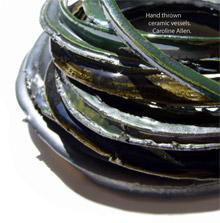Lene Melheim (University of Gothenburg)
The huge variation in the rendering of otherwise stereotypic Bronze Age motifs suggests that individual metalworkers or workshops responded to each other’s products and partook in what we may call a typological or stylistic discourse, in which the reproduction and alteration of types and styles was done rather explicitly. As argued by Oscar Montelius, Bronze Age creativity was structured by already existent forms, functions and designs. With reference to authors like Marcel Mauss, Pierre Bourdieu and Tim Ingold, one may add that even in a creative process, it is impossible to escape from the dispositions and recipes for action written into the body and structured by habitus.
But what happens if a thing foreign and hitherto unseen enters a material culture complex? The spread of object shapes, patterns and symbols from one region to another, is typically seen as a process of innovation in one place and tacit copying in another. An often discussed example is the Early Bronze Age Hajdúsámson-Apa swords of supposed Carpathian origin. The essentialist idea that authentically styled swords were imports, whereas swords influenced by contemporary Nordic styles were copies or hybrids, may well be considered reductionist and static.
The eight Hajdúsámson-Apa associated swords from Dystrup in Jutland is a case in point. They are, unlike most other swords of this kind, cast in one piece and seem, possibly, to have been copied directly from a prototype without skilled knowledge of the usual procedure for making such swords. It has been pointed out that the Dystrup swords were among the very first swords ever made in Scandinavia and that they as such also materialize the adoption of a new fighting technology into a context where flint daggers were still the norm. In this perspective, the Dystrup swords may be seen not as the blurry blueprints of a Bronze Age copycat, but as a way to objectify and incorporate a new and foreign technology with the help of familiar methods, at the same time reinventing and changing it. The occurrence of flint skeuomorphs underscores that the Hajdúsámson-Apa type was negotiated and transformed in this process. My talk will explore the domino effects of the adoption of the sword, by reassessing type and style as valid also in the perspective of a Bronze Age metalworker.


